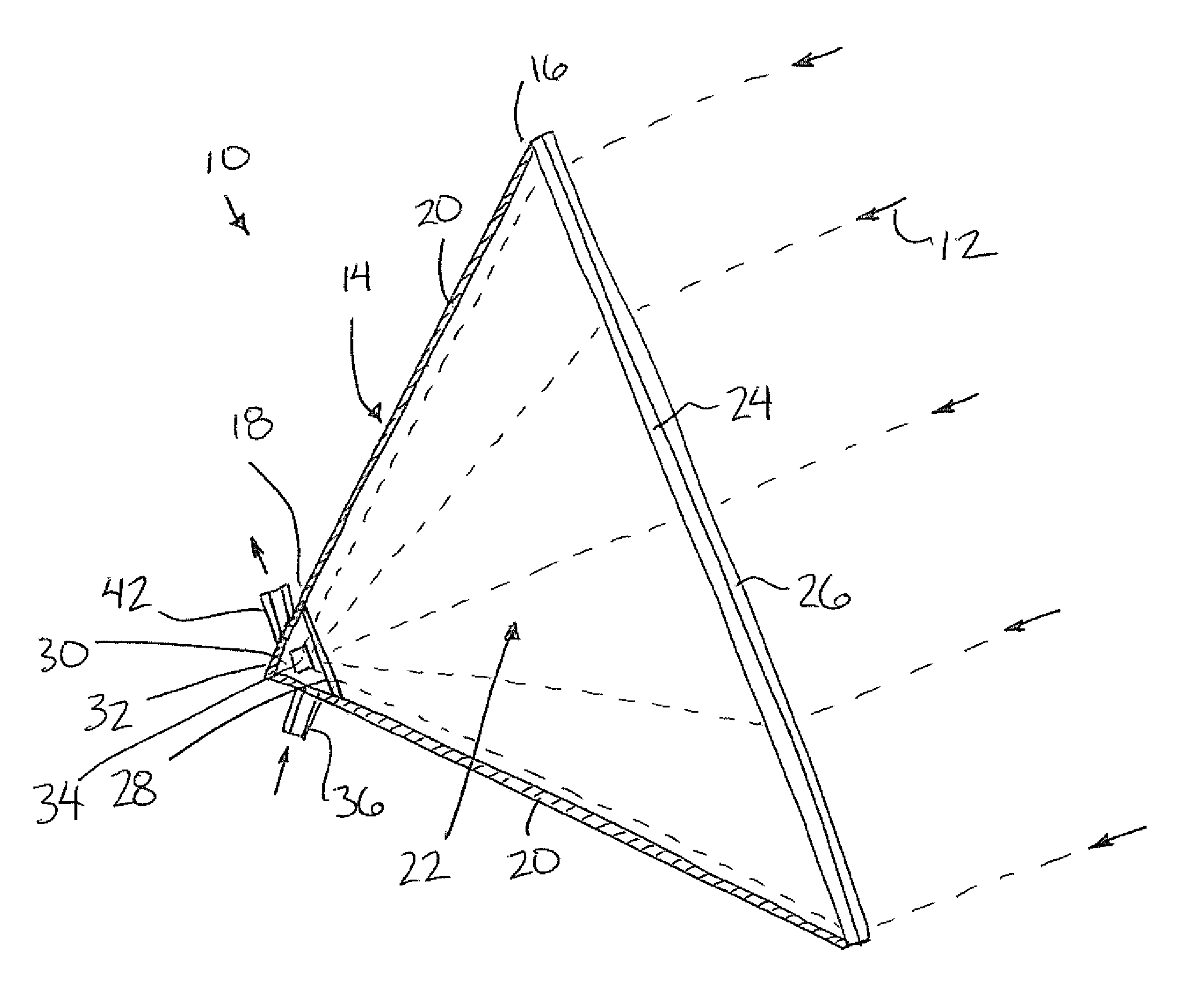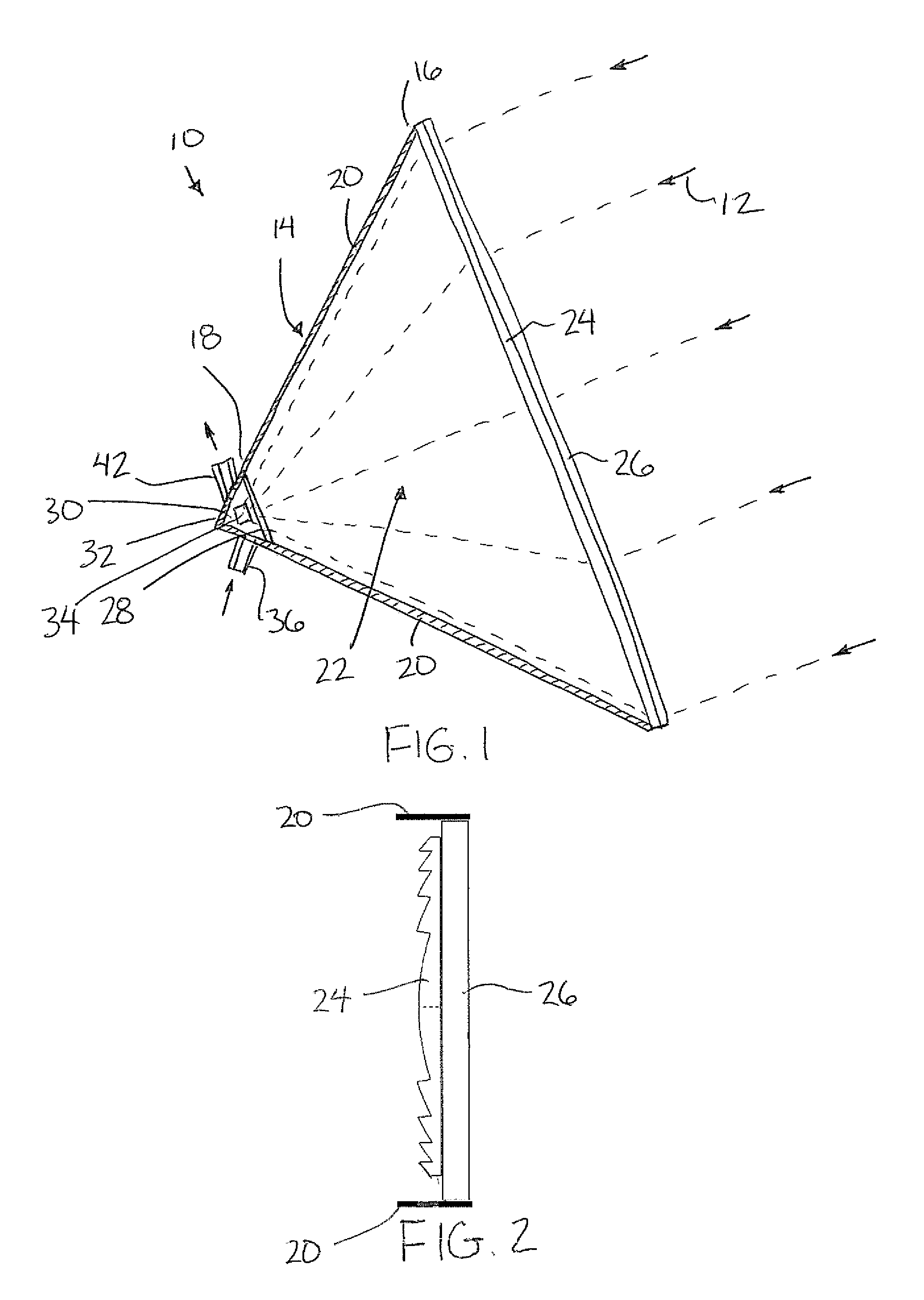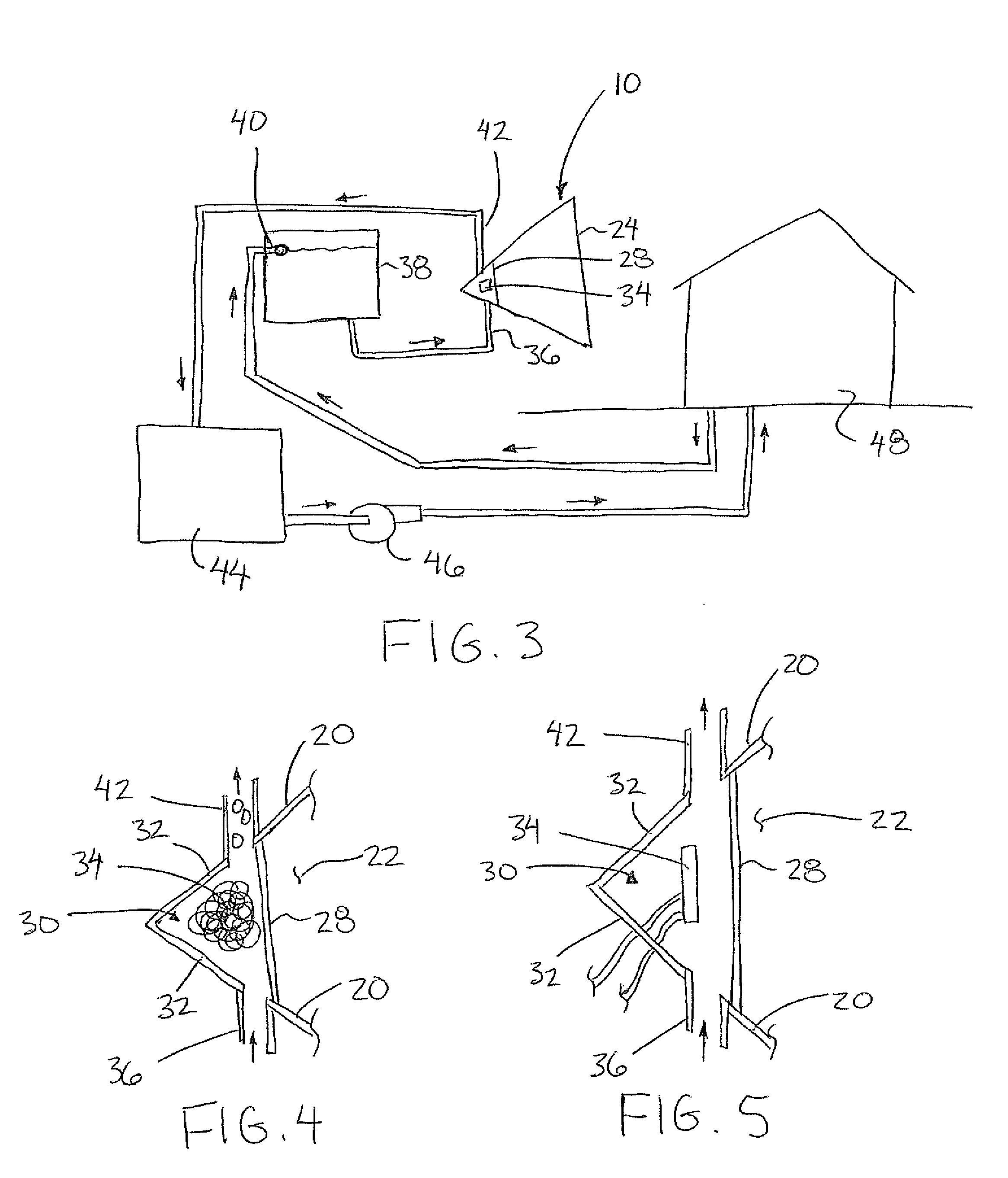Solar Heat Collector
a heat collector and solar energy technology, applied in the direction of solar heat devices, solar-ray concentration, moving/orienting solar heat collectors, etc., can solve the problems of large convective loss, large area, limited capacity to heat the exchanger fluid to very elevated temperatures, etc., and achieve the effect of reducing the loss of conveying and efficient cooling
- Summary
- Abstract
- Description
- Claims
- Application Information
AI Technical Summary
Benefits of technology
Problems solved by technology
Method used
Image
Examples
Embodiment Construction
[0058]Referring to the accompanying figures there is illustrated a solar heat collector generally indicated by reference numeral 10. The collector 10 is arranged to collect solar rays 12 from the sun to convert the solar rays into a usable form of energy for performing useful work.
[0059]Although various embodiments are disclosed in the accompanying specification, the common features of the various embodiments will first be described.
[0060]The collector 10 includes a housing 14 extending generally in a longitudinal direction from a receiving end 16 to a target end 18. The housing is arranged to be aligned such that the longitudinal direction is generally aligned with the direction of the solar rays which are received into the receiving end 16 of the housing. The collector serves to direct the rays inwardly towards the target end 18 of the housing.
[0061]The housing includes insulated housing walls 20 which surround an insulated chamber 22 of the housing. The walls surround the chamber...
PUM
 Login to View More
Login to View More Abstract
Description
Claims
Application Information
 Login to View More
Login to View More - R&D
- Intellectual Property
- Life Sciences
- Materials
- Tech Scout
- Unparalleled Data Quality
- Higher Quality Content
- 60% Fewer Hallucinations
Browse by: Latest US Patents, China's latest patents, Technical Efficacy Thesaurus, Application Domain, Technology Topic, Popular Technical Reports.
© 2025 PatSnap. All rights reserved.Legal|Privacy policy|Modern Slavery Act Transparency Statement|Sitemap|About US| Contact US: help@patsnap.com



